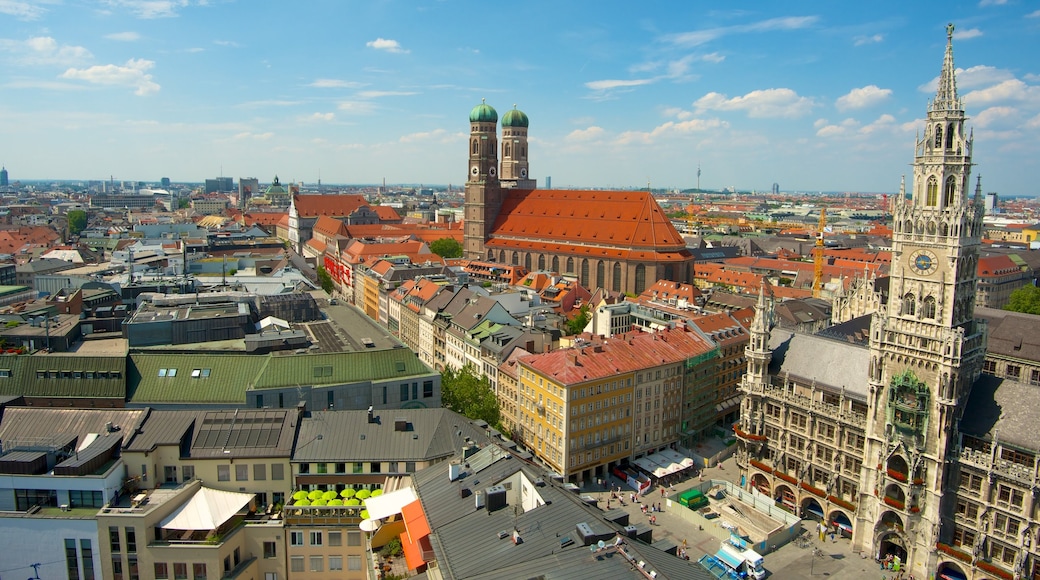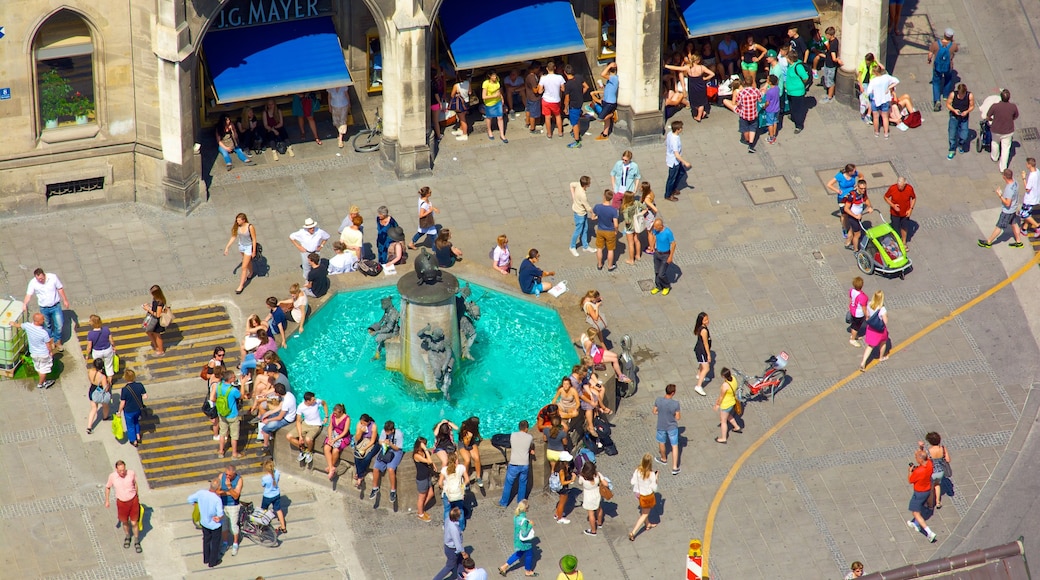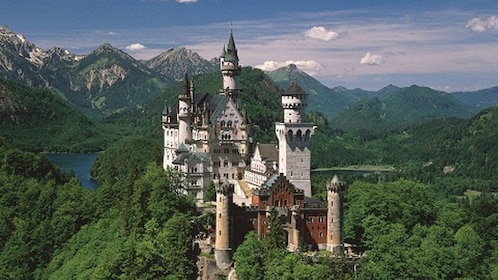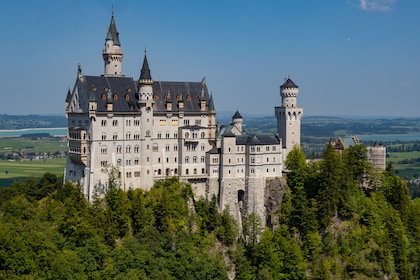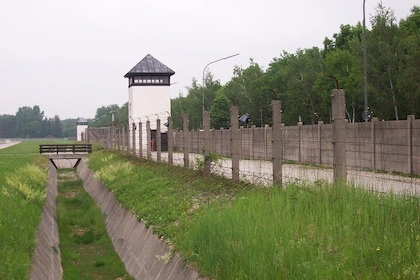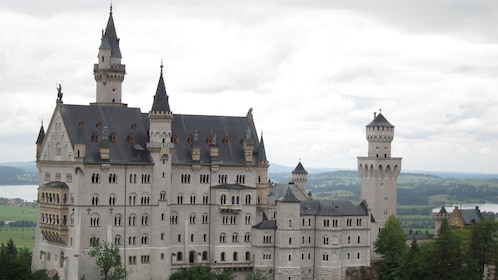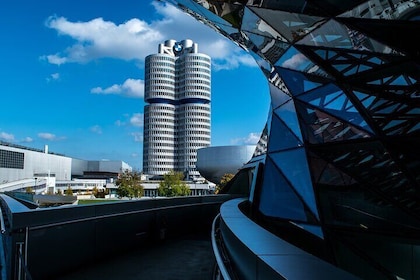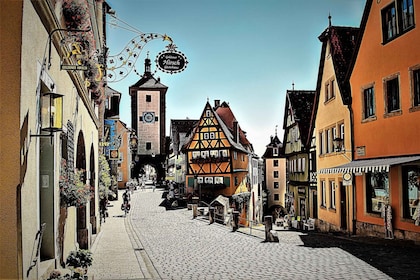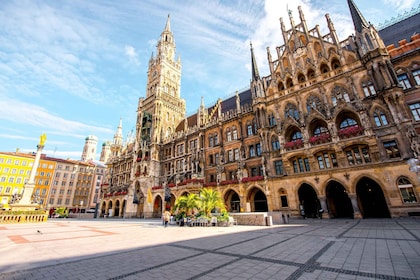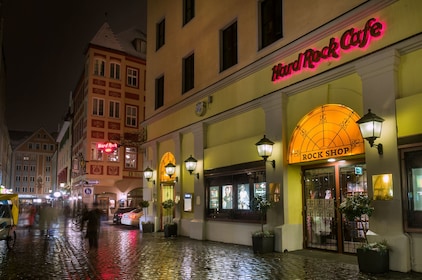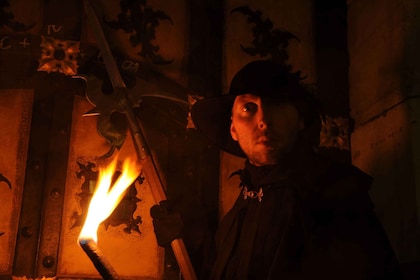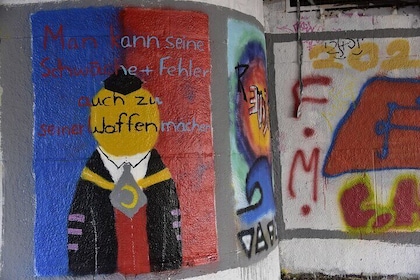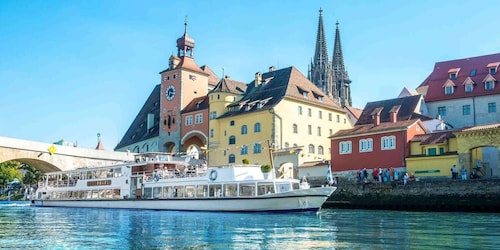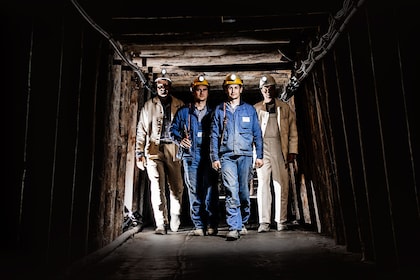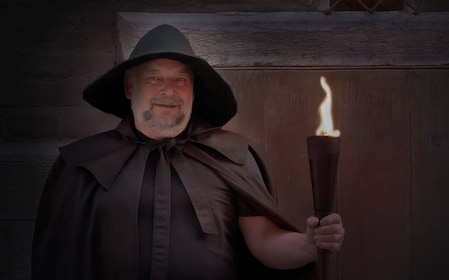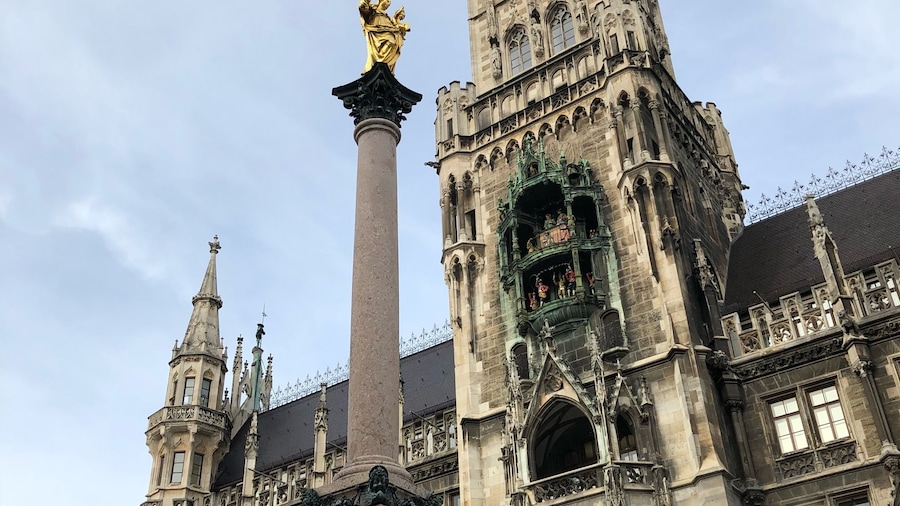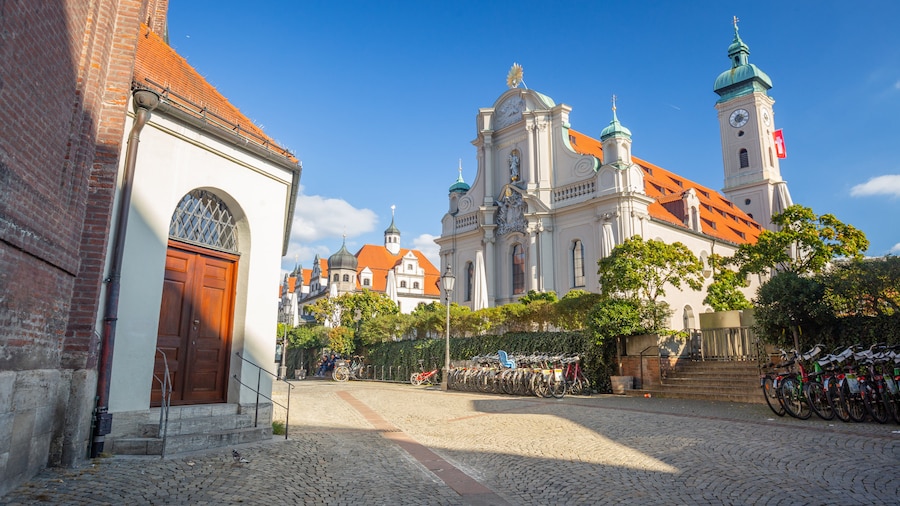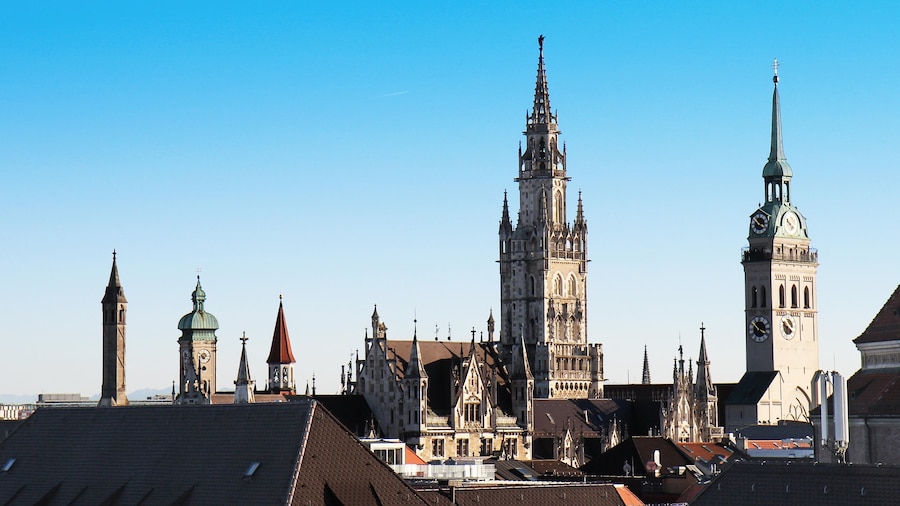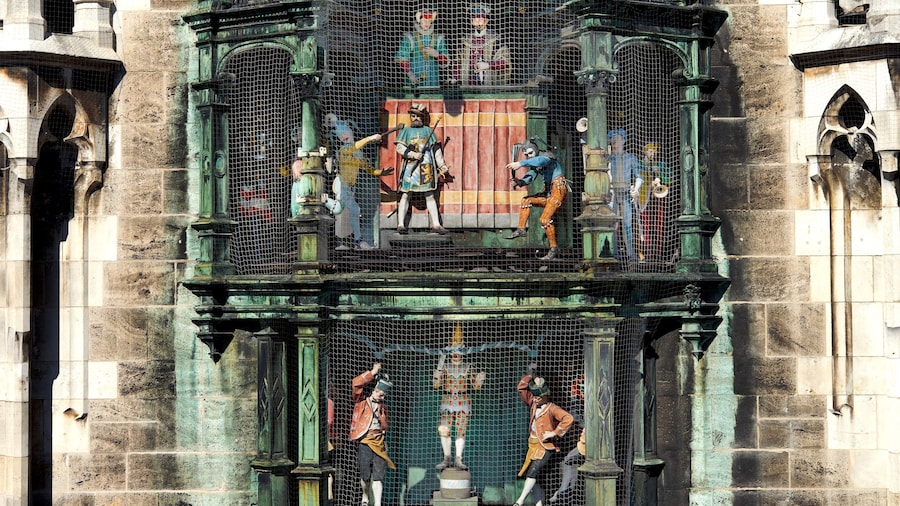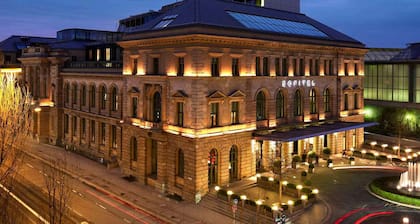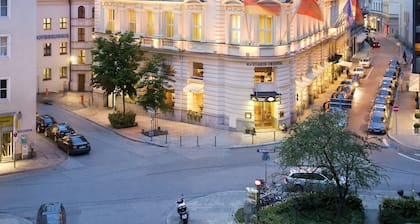The Peterskirche is the oldest recorded church in all of Munich. From its founding in 1180, the church has endured a tumultuous history. The Peterskirche was rebuilt in 1368 following a fire, and then again after it was almost completely destroyed in World War II. Reconstruction finally finished in 2000.
Due to the age of the church many architectural influences have been added to it through the generations. In the 17th and 18th centuries, the interior of the Peterskirche gained some new Baroque and Rococo features. While inside, look out for Erasmus Grasser’s figure of Saint Peter on the high altar. Here, Peter is crowned with a tiara, which, according to tradition, is removed after the death of a pope until the election of a new one.
Visitors with morbid taste should make sure to see the side-altar, which is where the remains of St. Munditia are kept. This Christian martyr’s remains have been kept for more than a century and were moved from Rome to Munich in 1675. Now her skeletal remains, covered in gold and precious jewels, can be seen in a Baroque-era shrine in the Peterskirche.
For a great view over Munich, climb the church’s tower, known affectionately to locals as Alter Peter or “Old Peter.” Wear comfortable shoes, since there are around 300 steps to the top. On a clear day, you can see all the way to the Alps. Within the tower, there are seven bells that ring, and one that doesn’t. Behind a barred window in the tower basement, you will find the oldest and smallest bell, which was rung back when executions took place on the Marienplatz.
The Peterskirche is open daily. Check local guides, as entry to the tower varies seasonally. The church is not open to visitors during religious services. The Marienplatz U-Bahn (subway) station is just a short walk from the church.

